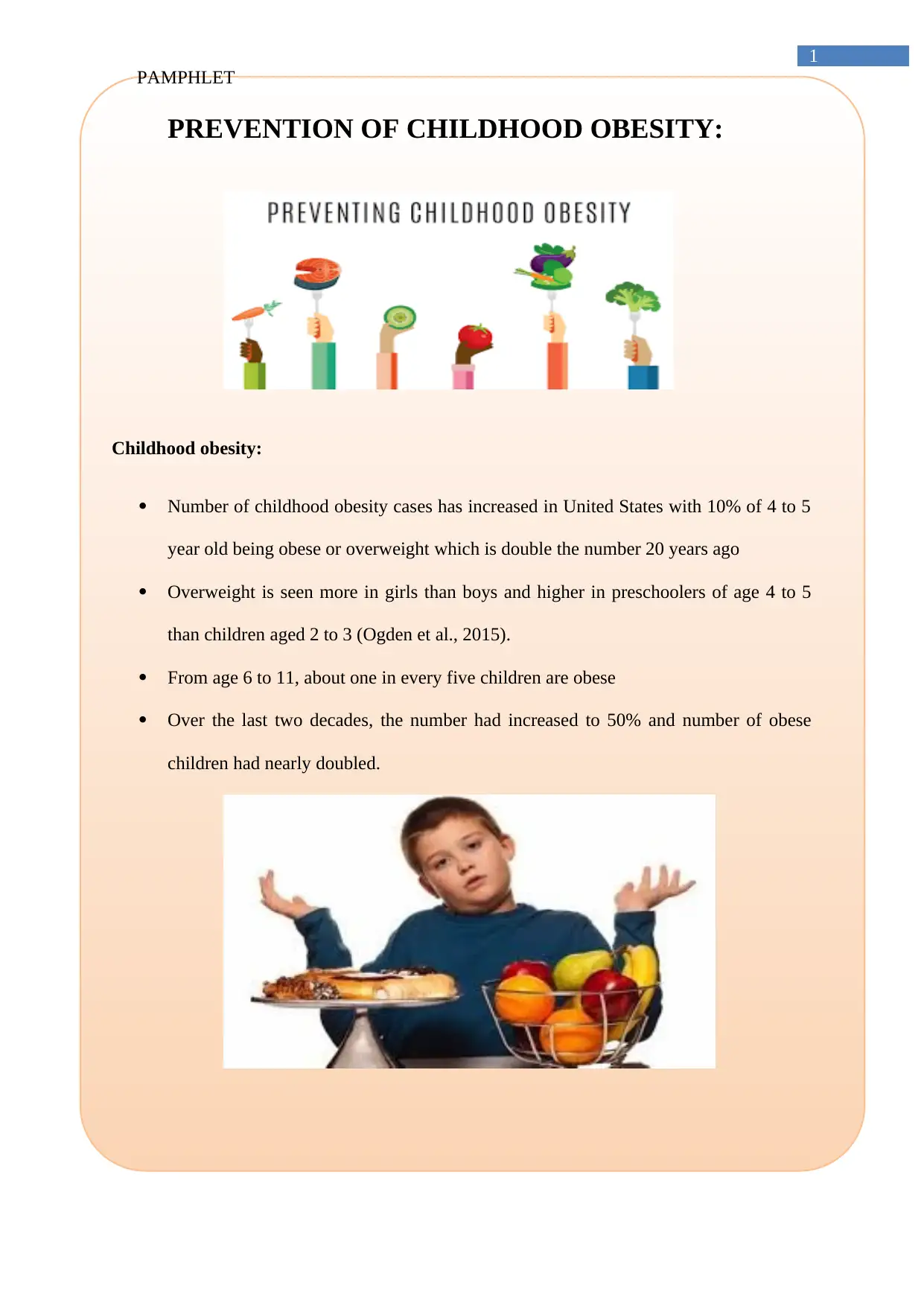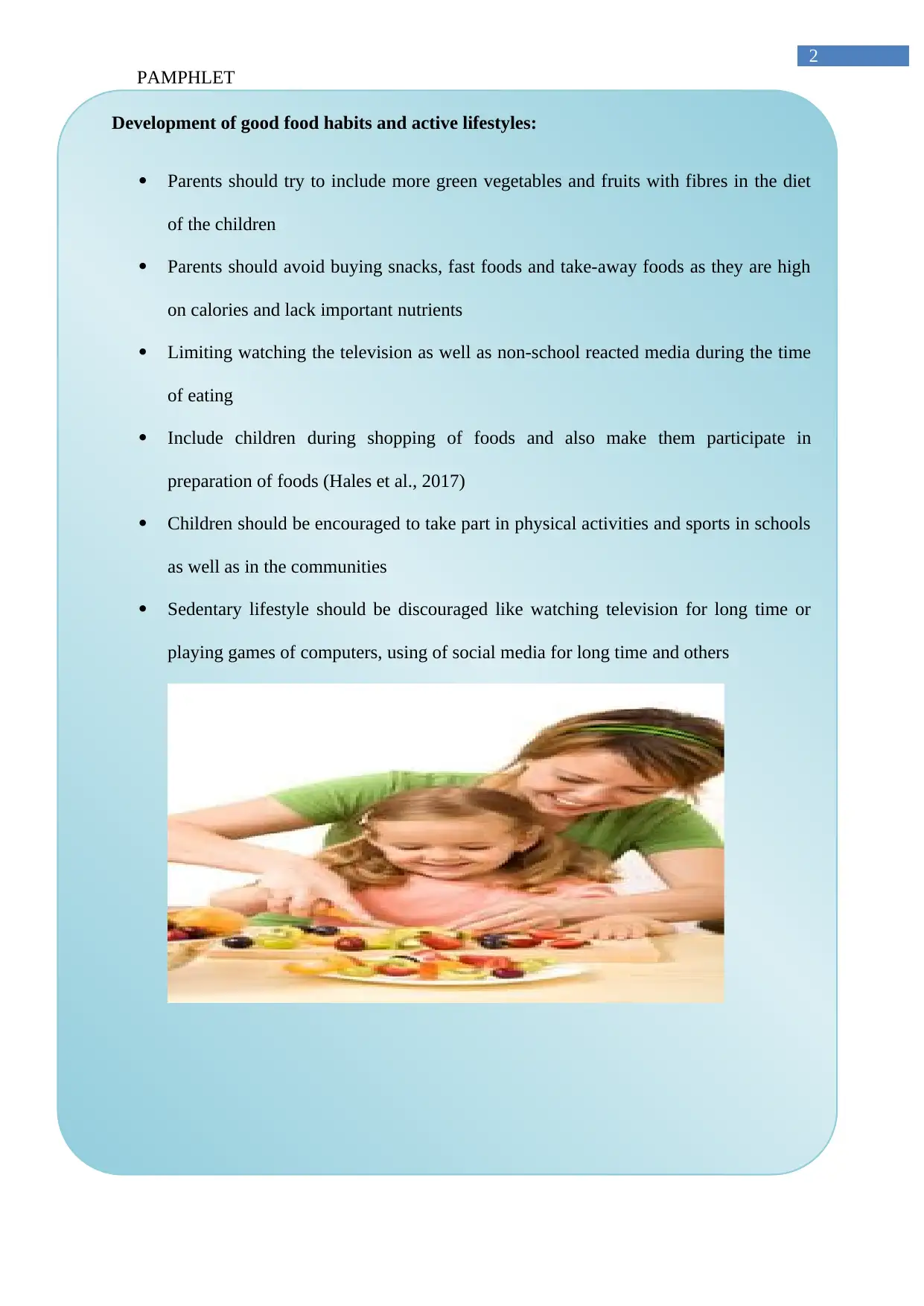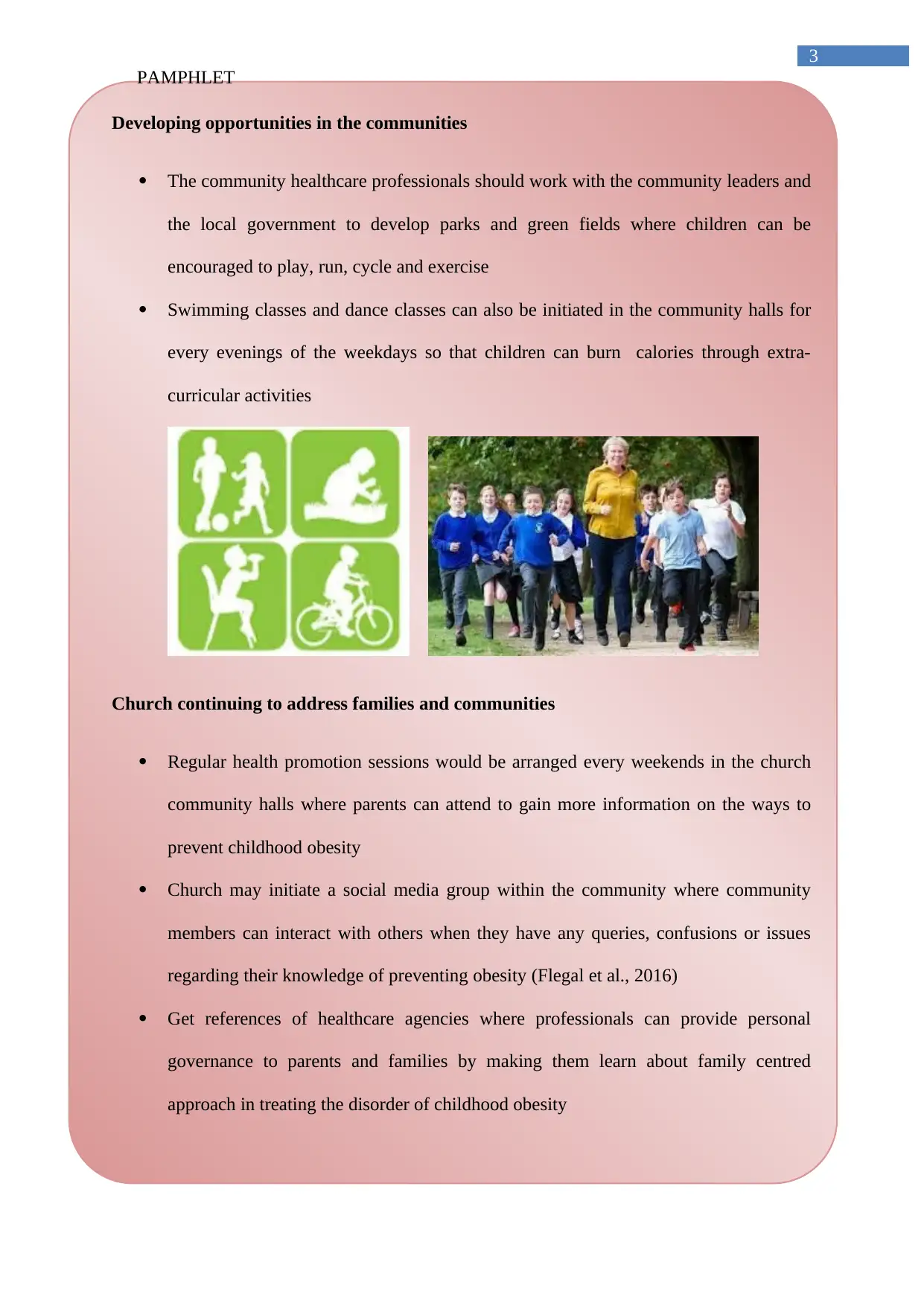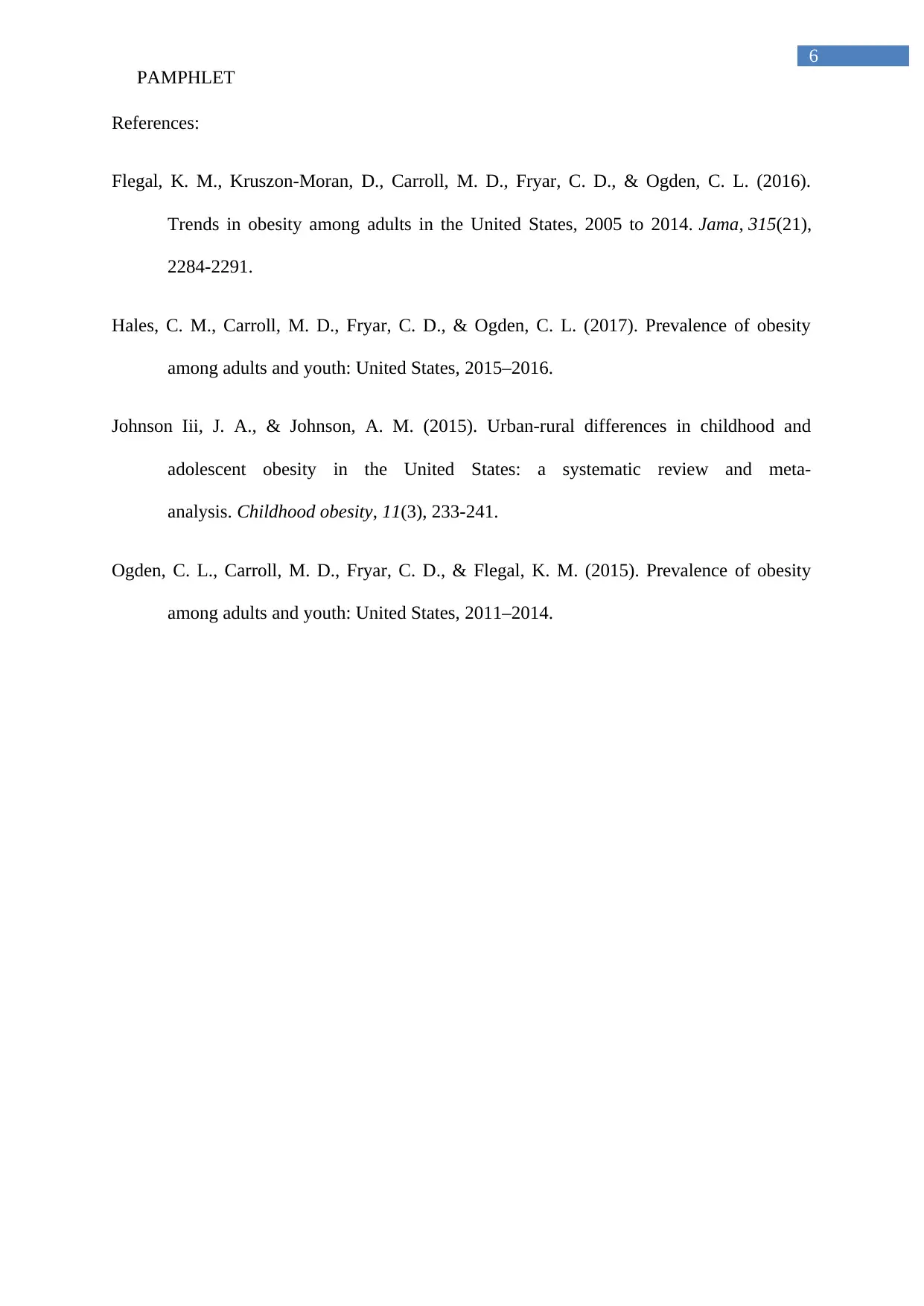Community Teaching Plan: Childhood Obesity Prevention Pamphlet
VerifiedAdded on 2023/01/18
|7
|852
|26
Practical Assignment
AI Summary
This assignment presents a pamphlet designed to educate communities on the prevention of childhood obesity. The pamphlet is divided into several sections, each addressing a key aspect of the issue. It starts with an overview of the increasing prevalence of childhood obesity in the United States, highlighting relevant statistics and demographic trends. Subsequent sections offer practical advice on developing good food habits and promoting active lifestyles, including recommendations for parents on incorporating fruits, vegetables, and physical activities into children's routines. The pamphlet also emphasizes the importance of community involvement, suggesting initiatives like developing parks, initiating exercise classes, and arranging health promotion sessions within church communities. Furthermore, it encourages the utilization of resources from non-profit organizations and the implementation of policies like restricting unhealthy food advertising and taxing unhealthy food items. The pamphlet provides a comprehensive approach to combating childhood obesity, combining individual, community, and policy-level interventions, and includes a reference list in APA format. This assignment is a practical application of health education principles, intended for a community teaching plan.
1 out of 7














![[object Object]](/_next/static/media/star-bottom.7253800d.svg)